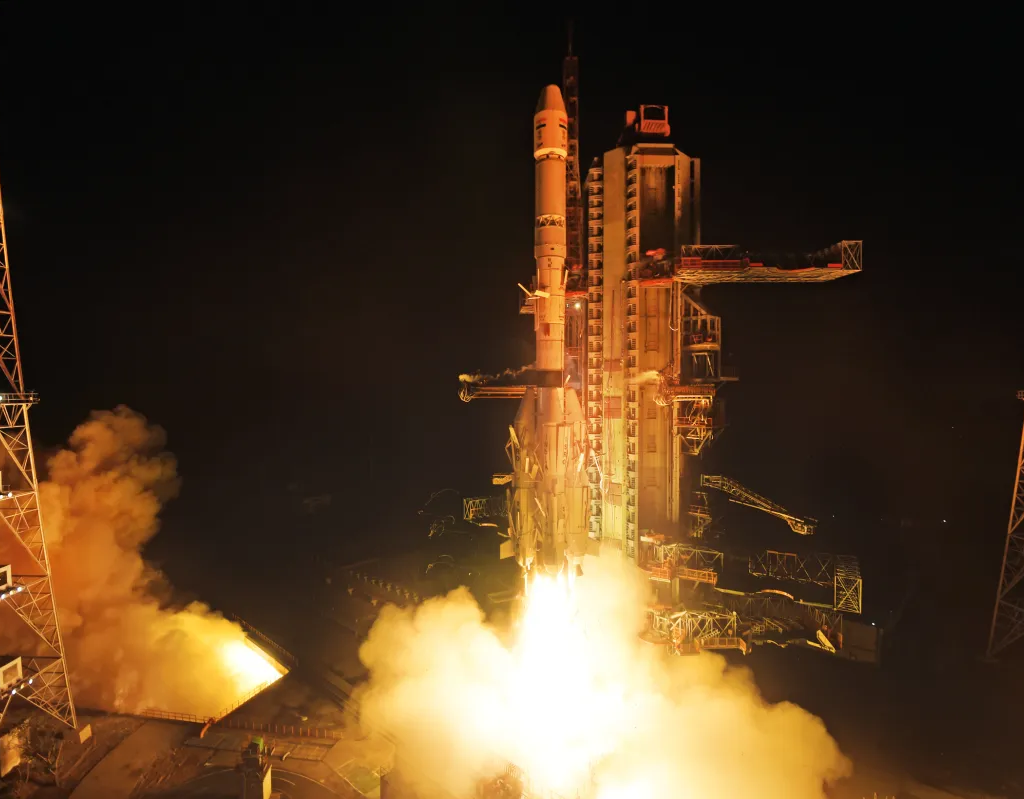India marked its first space launch of the year late Tuesday, successfully sending a new-generation navigation satellite into orbit. The Geosynchronous Satellite Launch Vehicle (GSLV) Mk II lifted off from Satish Dhawan Space Centre at 7:53 p.m. Eastern (0053 UTC), carrying the NVS-02 satellite into geosynchronous transfer orbit.
The NVS-02 is the second satellite in India's Navigation with Indian Constellation (NavIC) system, designed to provide precise real-time positioning, timing, and velocity information across India and surrounding regions. It follows the launch of the NVS-01 satellite in 2023.
Indian Space Research Organisation (ISRO) Chairman V. Narayanan confirmed the success of the mission, stating, “I am extremely happy to announce from the spaceport of ISRO that the first launch of this year, 2025, has been successfully accomplished, with the GSLV F15 launch vehicle precisely injecting the navigation satellite NVS-02 in the required intended orbit.”
The 2,250-kilogram satellite will be placed at 111.75 degrees East, replacing the IRNSS-1E satellite, which was launched in 2016. NVS-02 employs a combination of indigenous and procured atomic clocks to ensure accurate time estimation, according to ISRO.
The mission marks the 100th launch from the Satish Dhawan Space Centre, located on the southeastern coast of India. The first launch from the spaceport took place in August 1979. ISRO officials expressed confidence that the space agency will continue to expand its launch cadence in 2025, with plans for 10 orbital missions, a new national record.
Upcoming major missions include a joint Earth science mission with NASA, the NASA-ISRO Synthetic Aperture Radar (NISAR) mission, scheduled to launch in March, as well as an uncrewed test flight for India's Gaganyaan human spaceflight program. India also plans to launch the Vikram-1 rocket with private company Skyroot Aerospace in 2025.
ISRO's expansion plans include the approval for a third launch pad at the Satish Dhawan Space Centre to support future missions using the Next Generation Launch Vehicle (NGLV). Additionally, the agency is working toward becoming the fourth country to develop independent human spaceflight capabilities, with long-term goals including the construction of the Bharatiya Antariksha Station (Indian Space Station) by 2035 and a crewed lunar landing by 2040.
Earlier this month, ISRO achieved a milestone with a successful on-orbit docking test using its Space Docking Experiment (SpaDeX) spacecraft, advancing its human spaceflight ambitions.
